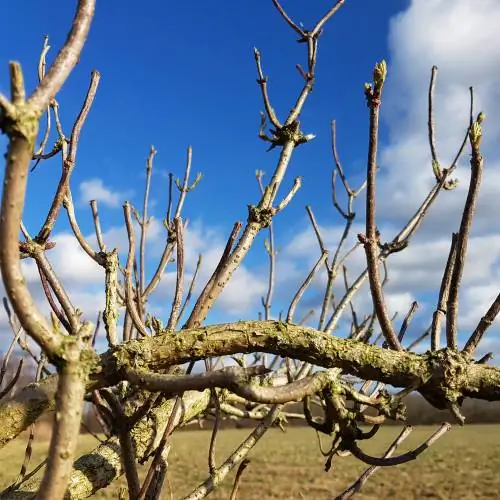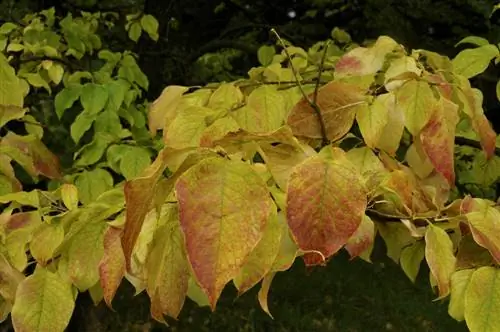- Author admin [email protected].
- Public 2023-12-16 16:46.
- Last modified 2025-06-01 06:02.
In many places, from May onwards, lilacs delight the viewer with their magnificent flower decorations. Unfortunately, the fragrant magic doesn't last too long, with some varieties blooming significantly longer than others. However, all lilacs are cut back immediately after they have faded.

What should you do when the lilacs have faded?
As soon as the lilac has faded, it should be cut back to encourage the formation of new flower buds. Remove spent panicles, dead, weak and old branches and root runners. After pruning, it is recommended to provide the lilac with ripe compost and horn shavings.
Always cut lilacs after they have bloomed
The common lilac (Syringa vulgaris), in contrast to the buddleia (with which it is often confused), always blooms on the previous year's or two-year-old shoots. These are branches that have already set flower buds the previous year. Since this happens shortly after flowering, a lilac bush should not be cut back in autumn or early spring. Instead, cutting immediately after flowering reduces the risk of removing valuable flower buds.
Cutting lilacs - this is how it’s done
Lilac doesn't have to be cut back too much, just thinned out and freed from dead, old and weak shoots. This pruning can be done annually and ensures that the shrub is continually rejuvenated, does not age and therefore grows lushly and produces as many flowers as possible. In any case, Syringa should not be cut back too much unless it is necessary: then it will become stressed and will only sprout more root runners, which are difficult to remove.
Cut lilacs correctly
- Prune only immediately after flowering
- use clean and sharp tools
- Cut out the faded flowers
- also dead, dry and diseased branches
- remove shoots growing inward and crisscross
- weak branches with only a few leaves also
- cut away old shoots that are no longer flowering
- and root runners
When cutting, make sure to remove the branches and shoots directly at the base and not to leave any nubs. In addition, scissors should only be used on dry and warm days so that the wounds can dry quickly.
What else should be done after flowering
After pruning, provide the lilac with a shovelful of ripe compost and a handful of horn shavings. Then the shrub can recover more quickly from the procedure and develop new shoots.
Tip
If you want to cut lilacs for the vase, you should choose panicles that are not yet fully bloomed. With the right care, they last longer.






